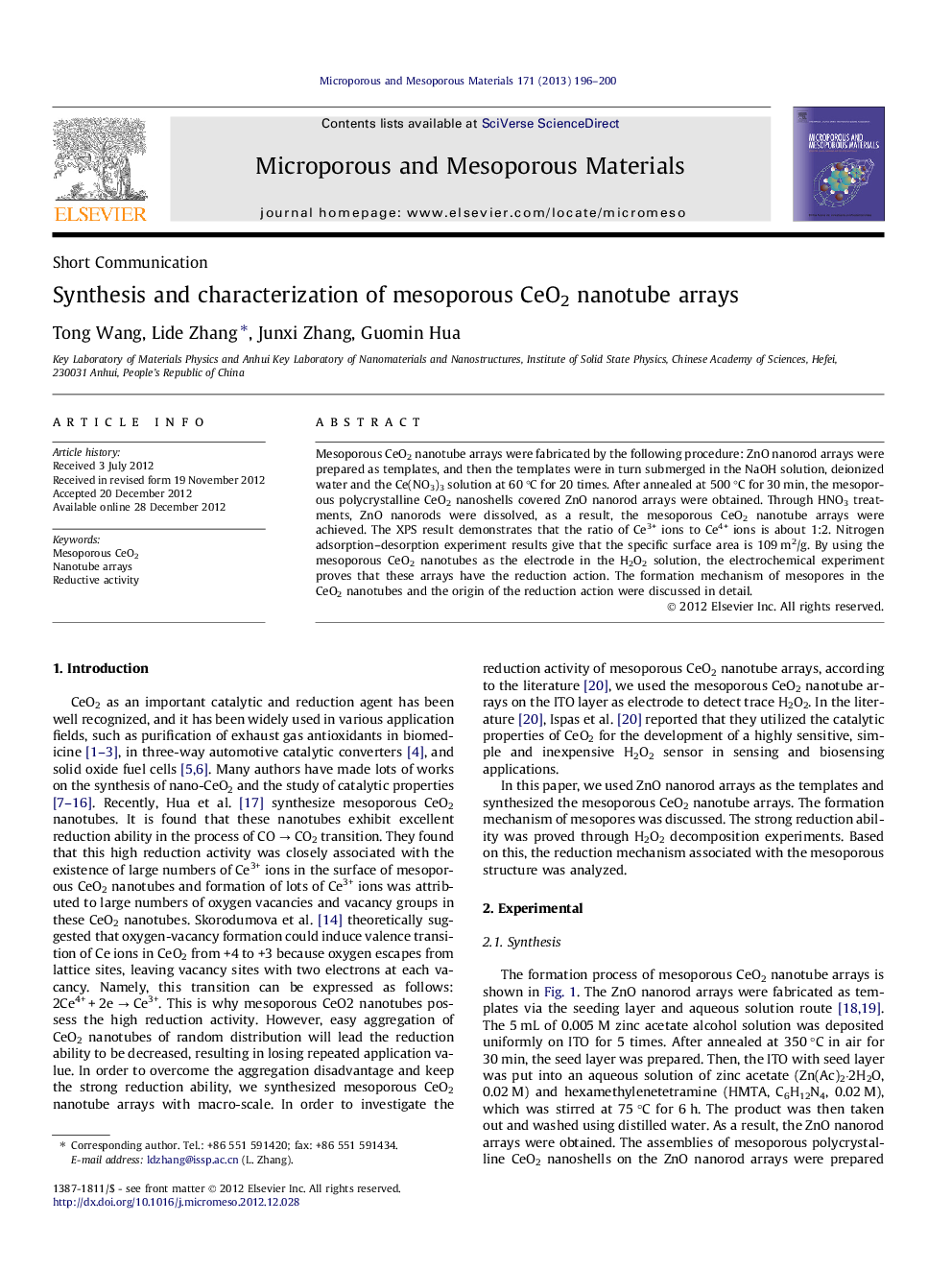| Article ID | Journal | Published Year | Pages | File Type |
|---|---|---|---|---|
| 73824 | Microporous and Mesoporous Materials | 2013 | 5 Pages |
Mesoporous CeO2 nanotube arrays were fabricated by the following procedure: ZnO nanorod arrays were prepared as templates, and then the templates were in turn submerged in the NaOH solution, deionized water and the Ce(NO3)3 solution at 60 °C for 20 times. After annealed at 500 °C for 30 min, the mesoporous polycrystalline CeO2 nanoshells covered ZnO nanorod arrays were obtained. Through HNO3 treatments, ZnO nanorods were dissolved, as a result, the mesoporous CeO2 nanotube arrays were achieved. The XPS result demonstrates that the ratio of Ce3+ ions to Ce4+ ions is about 1:2. Nitrogen adsorption–desorption experiment results give that the specific surface area is 109 m2/g. By using the mesoporous CeO2 nanotubes as the electrode in the H2O2 solution, the electrochemical experiment proves that these arrays have the reduction action. The formation mechanism of mesopores in the CeO2 nanotubes and the origin of the reduction action were discussed in detail.
Graphical abstractFigure optionsDownload full-size imageDownload as PowerPoint slideHighlights► The formation mechanism of mesopores in CeO2 nanotubes was discussed. ► The CeO2 nanotube has a high concentration of the Ce3+ ions, the ratio of Ce3+ ions to Ce4+ ions is about 1:2. ► These arrays overcome the nanotube aggragation, this keeps the strong reduction ability. ► We use the mesoporous CeO2 nanotube arrays as the precursor of detection devices to detect low concentrations of H2O2.
